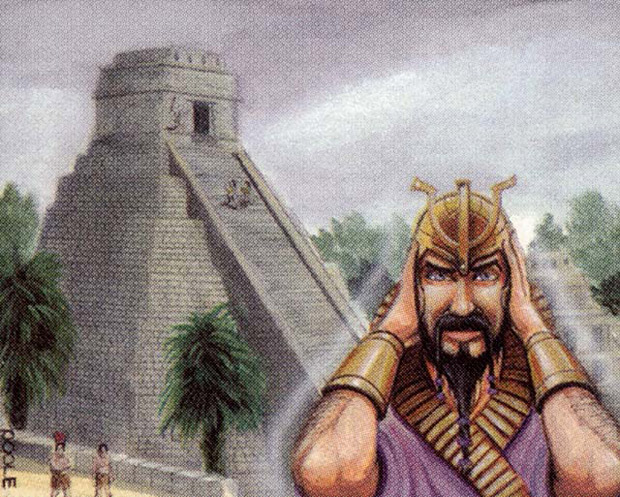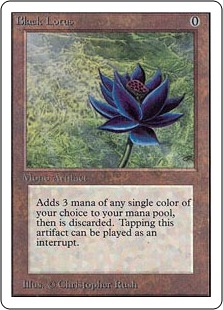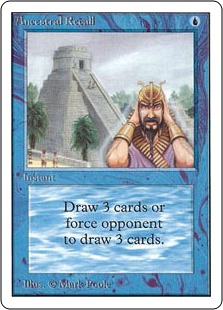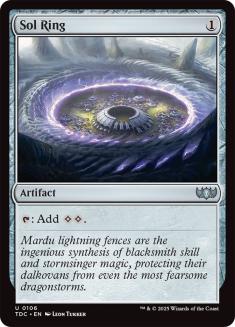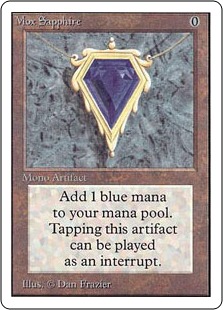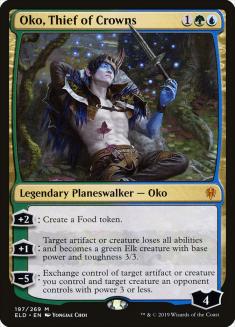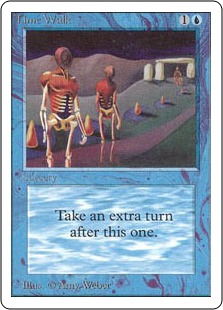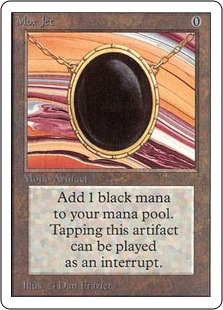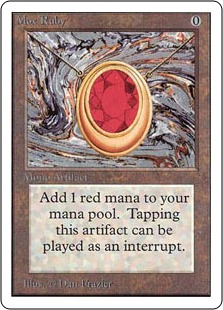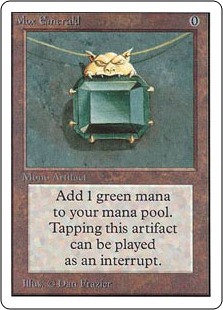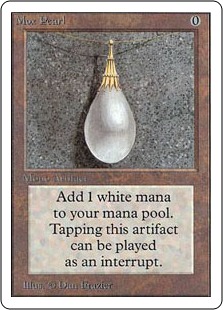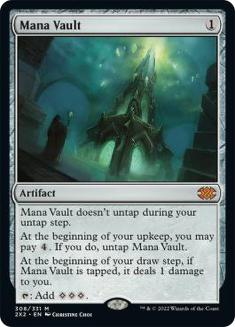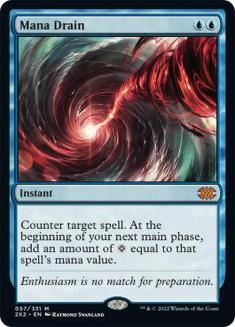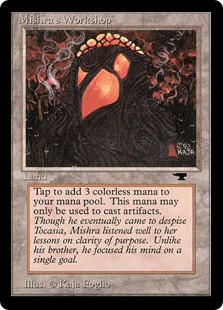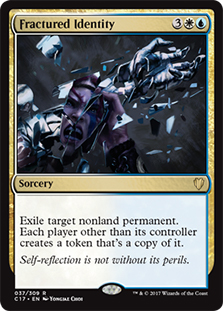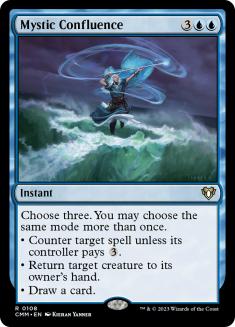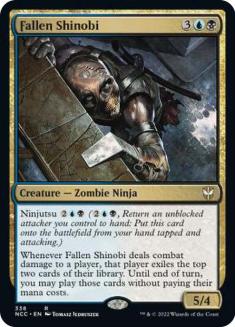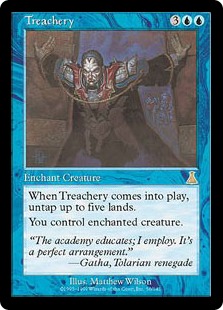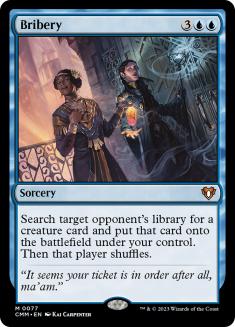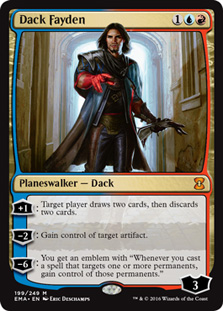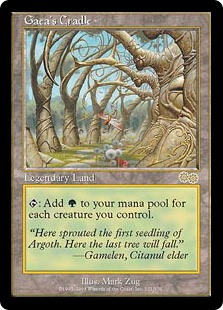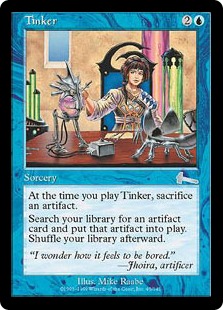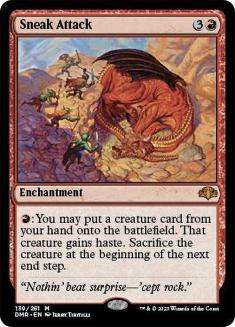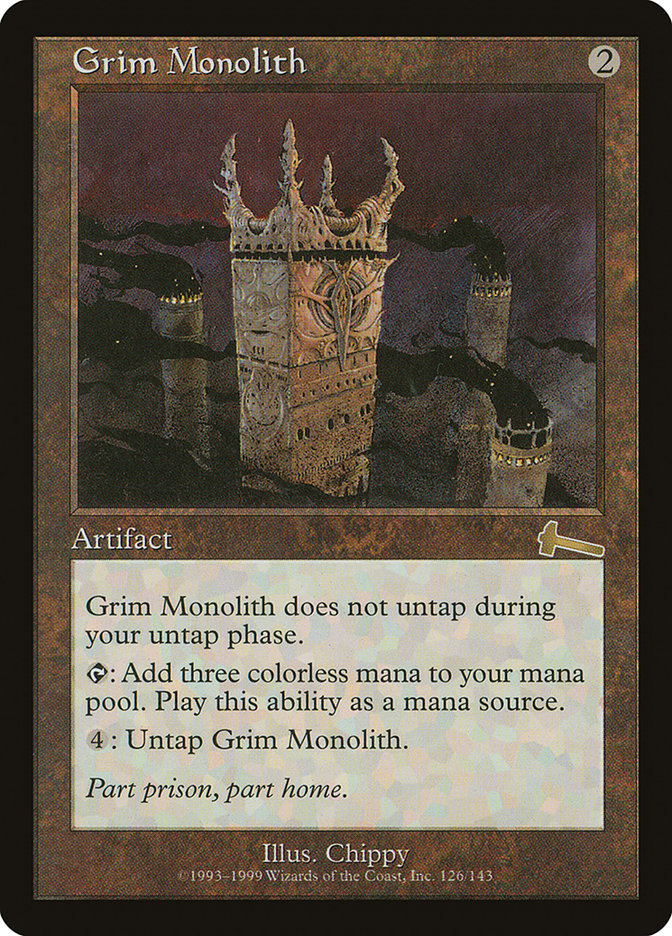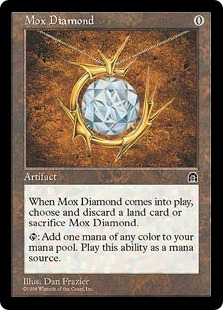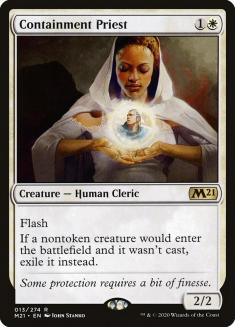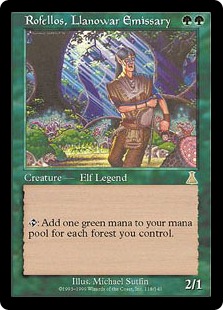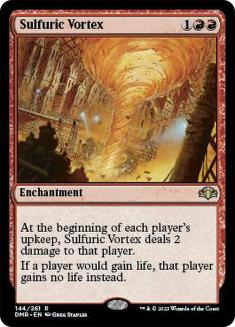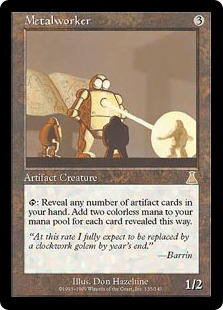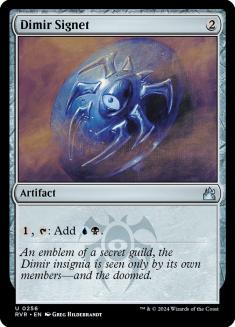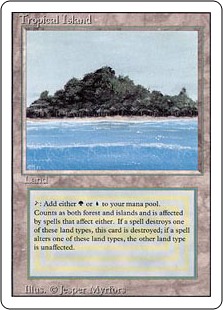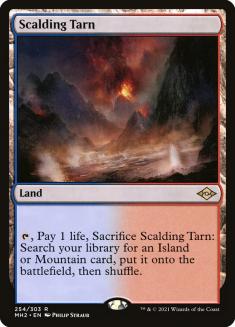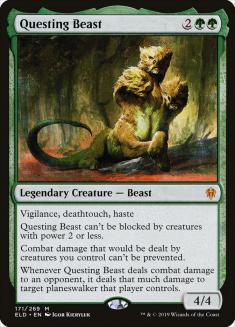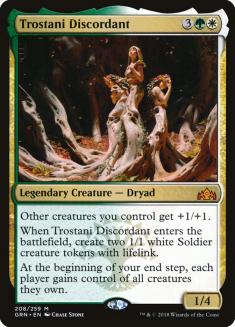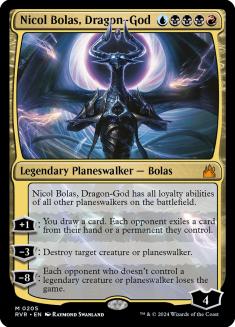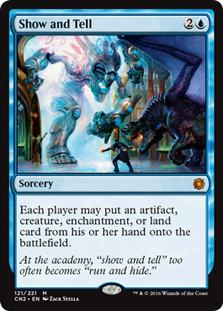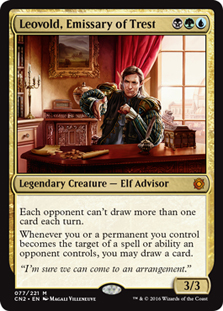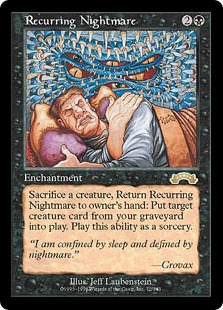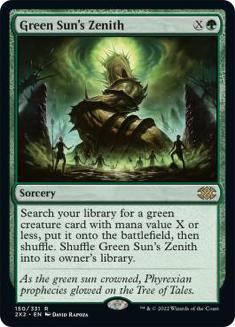In case you haven’t heard, the Vintage Cube is back on Magic Online (MTGO) for the month of July. As somebody who has had one of my own Cubes run on MTGO, I’m here to impart some wisdom on how to best enjoy your Vintage Cube experience and how to best navigate one of the most volatile Limited environments imaginable.
Vintage Cube features a wide range of viable archetypes, and even the most successful drafters will offer different insights on what they believe the best archetypes to be. The big takeaway that I want to offer today is that Vintage Cube is much less about figuring out which archetype is best and much more about understanding how to navigate a format with absurd mana generation. If you’re familiar with the history of the Vintage Constructed format, then you’ll know some pretty embarrassing cards (looking at you, Slash Panther) have been propped up significantly by Mishra’s Workshop and other fast mana. The base lesson from this history is that you don’t have to work very hard to win with Black Lotus.
Vintage Cube is all about efficiently leveraging your mana. You could say that Magic is generally about that sort of thing, but Vintage Cube is the Draft environment where this is most loudly declared. It’s imperative to make sure that you end up in a deck that does some combination of efficiently leveraging your mana while having some ability to curb your opponent’s ability to do so. If your first three to five picks don’t move your draft in this direction, you’re probably already in trouble. The simple fact is that the very best cards in Vintage Cube are foolish to pass and the very worst cards are foolish to pick. My pick order is based on understanding which cards are the very best and committing as hard as possible to playing these cards starting from Pack 1, Pick 1.
The following is my ranking for the sorts of cards I’m looking to first-pick. Some of these tiers will be exhaustive lists, while others will be a sampling of the nature of that tier, which I will make explicit in my thoughts on each category.
S-Tier
Whenever I start a draft, I hope to open one of these cards. Sol Ring, Ancestral Recall, and Black Lotus were for a long time the consensus best three cards in Magic, though there is some disagreement on which is the overall best Pack 1, Pick 1. Black Lotus can have the highest ceiling while Sol Ring most consistently does its thing. Personally, I’m an Ancestral Recall man. Assuming you have the mana to cast your cards, it’s also important to efficiently generate card advantage, and nobody does it better than Ancestral Recall.
Mana Crypt is close enough to Sol Ring to fit in here, but there’s some give and take. Costing zero is really nice, but if you play Mana Crypt long enough you’ll lose to the coin flips some of the time. Sol Ring pairs great with powerful value cards like Jace, the Mind Sculptor while Mana Crypt generally pushes you in a more aggressive direction.
I will say that not everyone is going to value Mox Sapphire the same way that I do. Blue is plainly the most powerful color in Vintage Cube (evidenced by the fact that the only nonartifact card in this tier is a blue card) and there are also the most blue cards in the Cube list as compared to the other colors. For my money the other Moxen are more or less colorless sources that sometimes fix your mana, while Mox Sapphire is a tremendous boon for blue interactive decks. A lot of countermagic costs multiple blue mana, and when many of your opponents will be using fast mana to cast expensive spells, counterspells become one of the most powerful forms of interaction.
I would love to see Oko, Thief of Crowns cut from every Cube. It is plainly too powerful in any non-Vintage Cube and is fully capable of being the only relevant spell played in a game of Vintage Cube. Some players have advocated Oko as their overall Pack 1, Pick 1, which I believe to be a defensible position. Oko invalidates stuff like Blightsteel Colossus and Reanimator strategies entirely, while being completely unreasonable against most honest strategies as well. Personally I have much more fun with Ancestral Recall, though I do currently take Oko over everything else. In the last run of Vintage Cube I noticed players were passing Oko entirely too much. I completely understand not wanting to play with Oko, though he’s one of the easiest routes to free wins.
Tier 0
I could see an argument for valuing Time Walk more highly than Mana Crypt, though you won’t encounter a lot of packs that cause you to pick between my top six cards and another Tier 0 option. If you’re first-picking one of the listed cards in these two categories, you’re starting things off in great shape.
Mana Drain gets a nice two-for-one here on being interactive and giving an absurd mana boost. I would bet it ranks close to number one for cards that I lose to immediately when my opponent casts them. Demonic Tutor is a little reliant on you ending up with other broken cards, but it’s always an incredibly efficient card selection tool, which can be a difference-maker if your opponent’s deck is more powerful but less consistent.
There are some other cards that enter into the conversation, though these are what I consider to be definitively the most powerful cards in terms of raw efficiency and power. I personally first-pick Mishra’s Workshop frequently, though it goes into a very specific deck that relies on drafting a high volume of artifacts, which can be very difficult as Signets tend to be great in the majority of Vintage Cube decks and I could see other players being much colder on it. I could also see Mind Twist, Tolarian Academy, Timetwister, Library of Alexandria, and Strip Mine entering the conversation here as cards that are plainly absurdly above rate and are all excellent at getting more mana worth of effects than your opponent. I put these cards very slightly behind my list, but they’re all excellent first picks.
Tier 1 — Not Power, but Still Broken
Once we get past the most broken fast mana and the cheapest and most efficient effects, we start looking at cards that require a little bit more investment but correlate very strongly with winning the game. We’re talking about the sorts of cards that would be easy first picks in the absence of power, and a few cards that are generally considered too good for those environments.
This category is a bit broader, and my list here is by no means exhaustive. What’s more important than the list is understanding the common thread. All of these cards account for huge swings that far exceed the mana invested. Fractured Identity is a little expensive as just a removal spell, but you’ll often be exiling expensive permanents in Vintage Cube. Compare it to using Oblivion Ring on Consecrated Sphinx. You pay two more mana upfront but you get six more mana worth of effect from your Consecrated Sphinx token. Bribery and Treachery will similarly often result in well worth the value of tapping five lands.
Dack Fayden can often just end the game when you steal an early Signet or Mox by both reducing your opponent’s mana production and increasing your own, and that’s to say nothing of stealing something like a Wurmcoil Engine.
Channel and Tinker turn a very small amount of mana into stuff like Myr Battlesphere and Emrakul, the Aeons Torn. Grim Monolith is definitely behind those effects, though a lot of draws from most decks will fold to a resolved six-drop on Turn 3. Mox Diamond doesn’t hold a candle to the real thing, but it’s all the same when you’re resolving cards like Jace, the Mind Sculptor and Wheel of Fortune.
Fallen Shinobi probably sticks out here, but I really never see that card hit without ending the game. You get to cast the spells you hit for free, and one good spell or two fine ones will very commonly put a game away.
I think Mystic Confluence is the card that I value this highly that I see passed the most. I imagine this is because, unlike Bribery, it’s not directly responsible for winning the game, but it is far more flexible and is generally worth well more than the five mana that it costs. Bouncing two creatures and countering a spell is a pretty common way to swing a game against a more aggressive deck, and both the counterspell and the bounce ability play quite well against most of the combo decks in the Cube with so much of the Cube being dedicated to putting some large creature on the battlefield. Beyond that, Jace’s Ingenuity would make a lot of my blue decks even in Vintage Cube and that’s the floor of Mystic Confluence.
Tier 2 — Interaction and Role-Players
Some packs just aren’t exciting, though not every 3-0 starts with a Black Lotus. Cards like Counterspell and Thoughtseize are efficient enough to be reasonable against basically any opponent and tend to overperform in Vintage Cube. If your opponent is playing a lot of fast mana and you answer all of their payoffs, then you generate a technical sort of card advantage when all of that mana has nothing to cast.
Cards like Containment Priest that turn off some of the most broken cards are also dramatically better than creatures that only attack and block. Turning off Sneak Attack or Reanimate can completely stop some opponents from playing the game.
Rofellos, Llanowar Emissary and other cheap green mana creatures present a clear path to a deck that generates a lot of mana, though these decks tend to be more vulnerable to creature removal than other decks. The nice thing about them is you’ll often be the only green drafter, which means you can get your best cards like Gaea’s Cradle and Natural Order late in the draft due to their niche nature.
Beyond that, cards like Sulfuric Vortex, Mother of Runes, Entomb, Mana Leak, or anything that provides some identity to your deck are fine places to start. Cheap and efficient cards that are interactive and/or have clearly defined roles/archetypes are where you want to be. You don’t want to try to draft a “good stuff” deck where you have a pile of cards that are fine when broken is possible.
I’m pretty big on drafting an early Metalworker for the same reasons that I like Mishra’s Workshop. There are also just a ton of artifacts that I will play in basically every deck that I’ll look to draft early that can overperform in Metalworker/Workshop decks. Phyrexian Revoker and Phyrexian Metamorph are two cards that make all of my decks for being extremely flexible and more powerful than they might appear. Shutting off or copying fast mana sources is powerful, and shutting off or copying payoffs is even better.
Tier 3 — Signets and Lands
I queue into a lot of four- or five-color decks in Vintage Cube, though I most commonly play one or two colors and sometimes splash a third. The most powerful cards are too much better than the next-best options for me to pick lands as highly as other players do. Signets are great because they’re mana acceleration, and I more commonly pick off-color Signets to fill out my mana curve than I do for any kind of mana fixing. I love casting Mystic Confluence on Turn 4. I don’t much care if it’s off basic lands.
Even two-color decks do want some multicolor lands so there’s obviously some nuance here, though my personal bias in a format as swingy as Vintage Cube is to make sure I have the sort of spells and mana acceleration that put my opponent on the back foot before I worry about how I’m casting them. If you open poorly in Pack 1, then it makes sense to develop a manabase and hope to open something better in Pack 2, but you get passed very few of the most powerful cards in a given draft.
Filler
The swings in Vintage Cube can be a lot to handle, though I do find joy in the fact that midrange decks are just horrible. There are 540 cards in the MTGO Vintage Cube. Most of them are clearly much worse than the best 30 or so cards, and some of them I hope I never have to register in any of my decks.
The best cards in the Cube will be highly contested and you can’t do anything about the presence of some cards that you’ll never want to play, but if Huntmaster of the Fells makes your deck, try your best to make it because you were shy on playables and not because you tricked yourself into believing it could hang.
Always always always bias your picks in favor of efficiency and do everything in your power to not end up with uninteractive midrange cards in your pool.
Vintage Cube by Color
The pick order outlined above offers a lot of direction for how to navigate the early part of the draft, though an understanding of each color’s strengths and weaknesses is imperative to navigate from there.
White
I don’t make a secret of the fact that I’m not big on the color white, though white does two things very well in Vintage Cube. The first is that the Mono-White Aggro archetype is basically always open, and if all you care about is drafting a coherent deck it will always be there for you. Toss a Mox or a Black Lotus in the mix and these decks are definitely capable of a 3-0. My friend and co-SCG Baltimore Team Open champion Liz Lynn enjoys forcing white and believes it to actually just be the best archetype. Here’s an example of one Liz’s 3-0 builds:
Creatures (12)
- 1 Figure of Destiny
- 1 Flickerwisp
- 1 Student of Warfare
- 1 Leonin Relic-Warder
- 1 Porcelain Legionnaire
- 1 Brimaz, King of Oreskos
- 1 Kytheon, Hero of Akros
- 1 Thraben Inspector
- 1 Selfless Spirit
- 1 Fairgrounds Warden
- 1 Tithe Taker
- 1 Giver of Runes
Planeswalkers (2)
Lands (17)
Spells (9)

Obviously having Black Lotus isn’t hurting anything, though that came Pack 2, Pick 1. The important notes here are the high volume of one- and two-drops with a sprinkling of threes and fours. The threes and fours are broadly interchangeable and you more want to get as many of the efficient ones and twos as you can. I will say that Gideon, Ally of Zendikar is the best four and is a hell of a thing to Black Lotus in, but the average draw more commonly curving a one-drop into two one-drops is a much bigger difference-maker in a large sampling of games. Strip Mine hanging out to push back on the opponent’s mana development is also huge, and is much more welcome than more fours or getting into any five-mana spells.
The other thing white does well is providing solid interaction for controlling strategies. This is most commonly going to mean Azorius Control. Unconditional removal that exiles is great against Reanimator strategies and really just anybody putting creatures on the table. White also just presents some of the best planeswalkers in the Cube, with Teferi, Time Raveler and Teferi, Hero of Dominaria both being very high picks.
I’d be remiss if I didn’t mention Balance and Armageddon, as I know a lot of folks are really big on these cards. In my experience, these cards are about equally likely to be great as they are to be mulligans. In the white beatdown deck I’ll take something that deals damage over Armageddon every day, and I personally beat Balance more than I lose to it. Balance is simultaneously not good enough to consistently perform in Vintage Cube while being too good for any other environment. A deck with a lot of artifact mana and planeswalkers can seriously leverage a Balance, though it’s really tough to get all of the right cards together as they’re all high picks, and I’d rather have the fast mana and planeswalkers than the Balance.
Blue
Blue is the most powerful color in the Cube and there are also just more blue cards than the other colors. I’ve 3-0’ed plenty of Vintage Cubes staying mono-blue, and blue is most commonly my primary color in any two or more color decks. Counterspells, Control Magic effects, and even bounce spells are all generally pretty powerful in most Cubes and their strengths are amplified in Vintage Cube as ways to interact with opponents leveraging fast mana.
If it could be said that blue has a weakness in Vintage Cube, it would be that there are probably too many win conditions. Blue has a lot of power for bullying opponents and stuff like Opposition and Deceiver Exarch combo will end up leading to less consistent and less powerful decks than just drafting busted mana and busted individual cards about as often as they’ll pay off in my experience. A stack of interaction, an Upheaval, and an Urza, Lord High Artificer are really all you need to actually close a game, and I’d prefer the rest of my cards to look like Force of Will rather than half-combos that can’t get it done on their own.
The biggest pitfall in blue is the card Show and Tell. It is powerful on occasion, though if you’re not winning the turn you cast it with something like Thousand-Year Storm, it’s more likely than you might think that your opponent will just annihilate you with some Eldrazi. Show and Tell is admirable in that it intends to cheat on mana, though the symmetrical nature is incredibly likely to bite you. I’m actually a bit miffed that Arcane Artisan, a card that I was generally happy to pick early, was cut from the Cube while Show and Tell and Eureka remained in despite their massive downsides.
Drafting mono-blue typically means being heavy on artifact mana, though this is a fine example of a two-color blue deck that is clearly leaning on the blue cards that I 3-0’ed with:
Creatures (11)
- 1 Sower of Temptation
- 1 Hero of Bladehold
- 1 Snapcaster Mage
- 1 Restoration Angel
- 1 Containment Priest
- 1 Monastery Mentor
- 1 Soulfire Grand Master
- 1 Thraben Inspector
- 1 Torrential Gearhulk
- 1 Walking Ballista
- 1 Giver of Runes
Planeswalkers (2)
Lands (17)
Spells (10)

This deck is honestly a little bit of a mess, and serves as a good example of how the best cards in the format are all that matter. In Pack 1 I was thinking I would end up as a Dimir deck, though the only good black card I got the entire draft was Fallen Shinobi and I didn’t see any good fixing. White just happened to be open, and I had enough white cards to get to 40 in my extremely good blue deck. Admittedly, Teferi, Time Raveler and Monastery Mentor are very noteworthy cards, though it would not be difficult to drum up a reasonable sampling of cards in any other color or even just a couple of artifacts that would have yielded a comparable deck.
Yes, Soulfire Grand Master does go infinite with Time Walk. No, that did not come up.
Black
Black is honestly weaker in Vintage Cube than I would like it to be. Part of the problem is that a lot of its cards are Reanimator support, and while Reanimator has a broken ceiling, it also has an unplayable floor. Entomb into Reanimate is great, and if you are able to load up on great card selection you can make it happen consistently, but cards like Buried Alive and Oona’s Prowler are typically too inefficient to be competitive and it generally makes more sense to me to play good creatures that are at least somewhat castable and try to do that in an deck with Signets and other, better forms of fast mana. I’ll first-pick a Griselbrand out of some packs, though more commonly my Vampiric Tutors are tracking down Tinker in my mostly blue deck.
Spot removal is much less maindeckable here than other environments, which is also much to the detriment of black. There’s just too much broken stuff happening to happily register Doom Blade. Black is in this awkward spot where it has great card selection in the most powerful tutor effects ever printed, though very few of the cards that you’d be interested in tutoring for. When I venture into black it’s most commonly for Leovold, Emissary of Trest or to try to play Storm.
Now, I’m a big Storm fan, though it’s not for everybody and I don’t recommend it if you’re not willing to embarrass yourself. When you try to force Storm sometimes your deck just doesn’t actually do anything and sometimes even when it does it can be impossibly hard to play. Personally, I have also been known to miscount on more than one occasion…
If you must Storm though, and I can’t blame you, here are a couple of pointers on pick order. Much like my notes on drafting blue, you should worry about win conditions later. Nobody else wants Tendrils of Agony so you should try to wheel it, and if it doesn’t come back around your deck isn’t going to work out anyway. Just like the general pick order, you’re going to value fast mana most highly. Storm specifically is more interested in Dark Ritual than most, and you should pick Yawgmoth’s Will on the level of a Tier 0 card.
In my experience, once you have Yawgmoth’s Will, if anybody at the table opens Lion’s Eye Diamond it will come to you, which is the easiest two-card combo for making a lethal Storm turn happen. Keep in mind that Underworld Breach was cut from the Cube so you are looking for explicitly Yawgmoth’s Will. Beyond that, card selection and card draw are very important, and Storm is the one archetype that I regularly draft where I believe you have to take lands highly because you will lose to your manabase otherwise. That part works out though, because you should only be drafting Storm if nobody else at the table is interested, which means you’ll be wheeling a lot of the spells that make your deck.
An easier way to end up with a solid black deck is to build around Recurring Nightmare. Recurring Nightmare is one of those cards that is too good for most Cube environments while being somewhat overshadowed in powered Cube, but it can still get the job done. If your opponent has brought something fair to the table, then the classic combo of Nightmare and Deranged Hermit can just be lights-out, though I like to make sure I end up with some creatures that can destroy mana sources in the mix. Phyrexian Revoker, Reclamation Sage, and Acidic Slime are good to have around to slow the opponent down in the early-game and something like Woodfall Primus or Terastodon can slam the door once you get them online (preferably assisted by a discard outlet like Jace, Vryn’s Prodigy).
Red
Red has gone through many different iterations in the history of the MTGO Vintage Cube, and in the last couple of runs I just have not seen the volume of cards necessary to draft Mono-Red Aggro in most of the drafts that I’ve done. Where blue has the most cards in the Cube, red for some reason has the fewest. I take no joy in reporting this, especially considering that I was able to post a 3-0 with the archetype the only time it felt open during the last run of the Vintage Cube.
A great red aggressive deck in Vintage Cube usually implies the presence of Mox Ruby, Black Lotus, and/or Strip Mine, but the most important thing is that you get a lot of one-drops and a good amount of two-drops. This is a problem, because there are only seven aggressive red one-drops in the entire Cube, and one of them is Figure of Destiny which will be picked highly for white decks as well. The current curve for the Cube is very heavy on four- and five-mana stuff, and you generally only care about getting two or three cards that are this expensive if you want a competitive red deck in a broken environment. There have been iterations of the Cube where I would more happily force red, though I believe currently there just aren’t enough one-drops for me to happily endorse this. Sometimes the stars align and the cheap red cards are opened in the draft and I don’t open a Tier 0 card, but it doesn’t happen nearly as often as I would like.
Red does serve an important role in a couple of non-aggressive archetypes though. Sneak Attack is among the easiest cards that take a player from no battlefield presence to winning, and red offers a handful of rituals and other effective cards for the Storm decks.
Cards like Lightning Bolt can be useful to give control decks an edge against aggressive decks as well. On that front, Abrade is probably the best red card for controlling red decks given its versatility in a format lousy with artifact mana.
Green
Mono-Green Ramp might be my most-drafted archetype in Vintage Cube. When you miss on the best fast mana, you just have to make do with Llanowar Elves. Rofellos, Llanowar Emissary and Gaea’s Cradle are two of the most powerful cards in the mono-green decks, and they don’t really play well with other colors. A weak build of mono-green isn’t going to be anything to write home about, but a strong build of mono-green rewards you for playing a manabase of all Forests with consistently explosive draws. Here’s a look at a 3-0 mono-green deck:
Creatures (18)
- 1 Sakura-Tribe Elder
- 1 Rofellos, Llanowar Emissary
- 1 Eternal Witness
- 1 Elves of Deep Shadow
- 1 Devoted Druid
- 1 Noble Hierarch
- 1 Acidic Slime
- 1 Lotus Cobra
- 1 Oracle of Mul Daya
- 1 Avenger of Zendikar
- 1 Joraga Treespeaker
- 1 Fauna Shaman
- 1 Scavenging Ooze
- 1 Craterhoof Behemoth
- 1 Elvish Mystic
- 1 Courser of Kruphix
- 1 Den Protector
- 1 Tireless Tracker
Planeswalkers (4)
Lands (16)
Spells (2)

Much like with white and red, there tends to be too many cards at the top of the curves of these decks in the Cube. You want a healthy amount of one- and two-mana creatures, preferably ones that generate mana, and then just enough stuff at four or more to ramp into. The fives are mostly interchangeable, though Nissa, Who Shakes the World is probably the best and both Elder Gargaroth and Vivien, Monsters’ Advocate are two cards that I will actively try not to play given how much worse they are than the other fives.
Green Sun’s Zenith is among the more important cards for this archetype, and the difference between a green deck with or without Craterhoof Behemoth is night and day. Once you have Craterhoof you don’t have to worry about having other top-end or having awkward mana ramp effects to bridge you to casting a bunch of stuff that casts seven or more; you just need to put some bodies on the table and summon the extremely lethal Beast as quickly as possible.
Putting Theory into Practice
Getting into Vintage Cube is a pretty daunting endeavor, which tends to be truer the newer to competitive Magic you are. I hope the information provided here is helpful for those of you looking to tighten your skills in high-power environments.
In the coming weeks I’ll be putting out articles looking at interesting draft picks as I come across them on MTGO, which should help to build on the groundwork I’ve laid here. Experience is the best teacher, but I’ll do my best to facilitate some good lessons.

